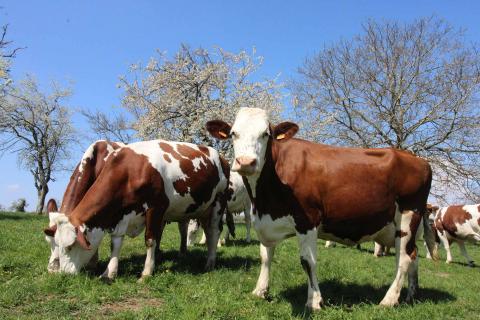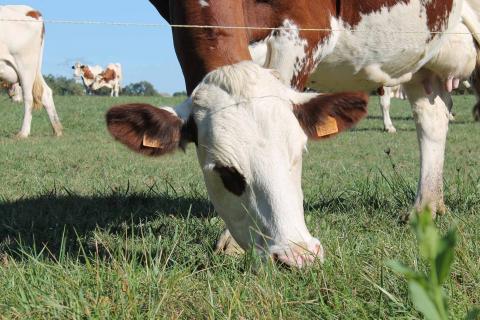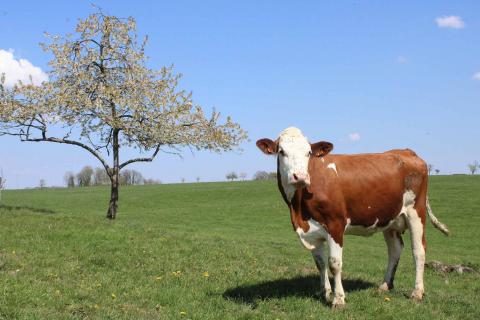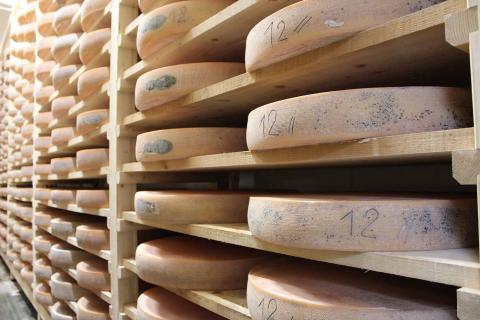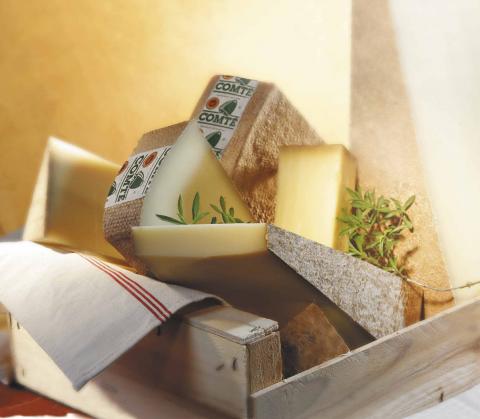
The Montbéliard cow
he birthplace of the Montbéliard cow
The story of our famous cows dates back to the early 18th century. It was during this time that the first Mennonites (members of a religious movement linked to Anabaptism, who were abused and persecuted in the canton of Bern in German-speaking Switzerland) arrived in the Pays de Montbéliard, where they were welcomed by Prince Léopold-Eberhardt, who had ‘sensed a good deal’. They were skilful breeders and farmers, and furthermore were non-violent. One of their descendants, Joseph Graber, methodically selected cows from his Swiss herd to breed with local breeds of cattle and ensured that this ‘new breed of cow’ was given the reputation it deserved in national agricultural competitions.
It was not until the 1889 Universal Exhibition and with the support of the Minister of Agriculture at the time, Jules Viette, a native of Blamont, that the Montbeliard cattle breed was officially recognised and its herd book created.
The Montbéliard cheese dairy, located in the former farm of Graber au Pied des Gouttes, tells the story of the Mennonite community's expertise in agriculture.
Today, the ‘Montbéliarde Association’ ensures that the breed continues, manages the herd book and organises promotional activities. www.montbeliarde.org
In the Pays de Montbéliard, you can see our cows in Blamont, Ecurcey, the villages of the Rupt valley (Saint-Julien-les-Montbéliard, Semondans and Présentevillers), Dambelin, Vandoncourt and Dasle, etc.
From cow to cheese
Today, the Montbéliard breed makes up 95 % of dairy cows in Franche-Comté. Originating from a cheese-making tradition, this high-yielding dairy cow is firmly established throughout the world and, as such, represents one of the jewels of French livestock farming.
Our Montbéliards produce the milk which is used to make our regional cheeses (comté AOP, morbier, cancoillotte, etc.), as well as butter, cream, the tomme des Princes and tomme du Wurtemberg, etc. which are found in fruitères and cheese shops across the Pays de Montbéliard.
A Montbéliard cow produces about 20 litres in 2 milkings, so it takes the milk of 20 cows (400 litres) to create a Comté cheese wheel. It takes a wheel a minimum of 4 months to mature, but as there is no maximum maturation time, this can last up to 8, 12, 15, 18 or 25 months depending on how gourmets like it.
> To find out more about Comté and ‘les routes du comté’ (the Comté trails): www.comte.com
Since 2001, ‘Les Routes du Comté’ has been a unique network based on the strong ties which link the Comté to tourism in the ‘Montagnes du Jura’ (Jura Mountains) - an area which includes the départements of Ain, the Doubs and the Jura) It mainly groups together farms, fruit farms and maturing cellars which can be visited, as well as ‘cheese making’ museums and ‘gourmet stopovers’. These are recommended points of sale of regional products and different types of food and drink outlets which can all be found in the Pays de Montbéliard.
> Guide of the ‘routes du comté’ available from the Tourist Office
Did you know?
Many people remember the cows kept their horns in the old days and often wonder why Montbéliard cows today no longer have their pretty horns. The farmers remove their horns simply to keep the cows safe when they are together and to make it safer for people too. But they are still really lovely, aren’t they?
